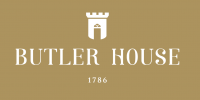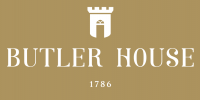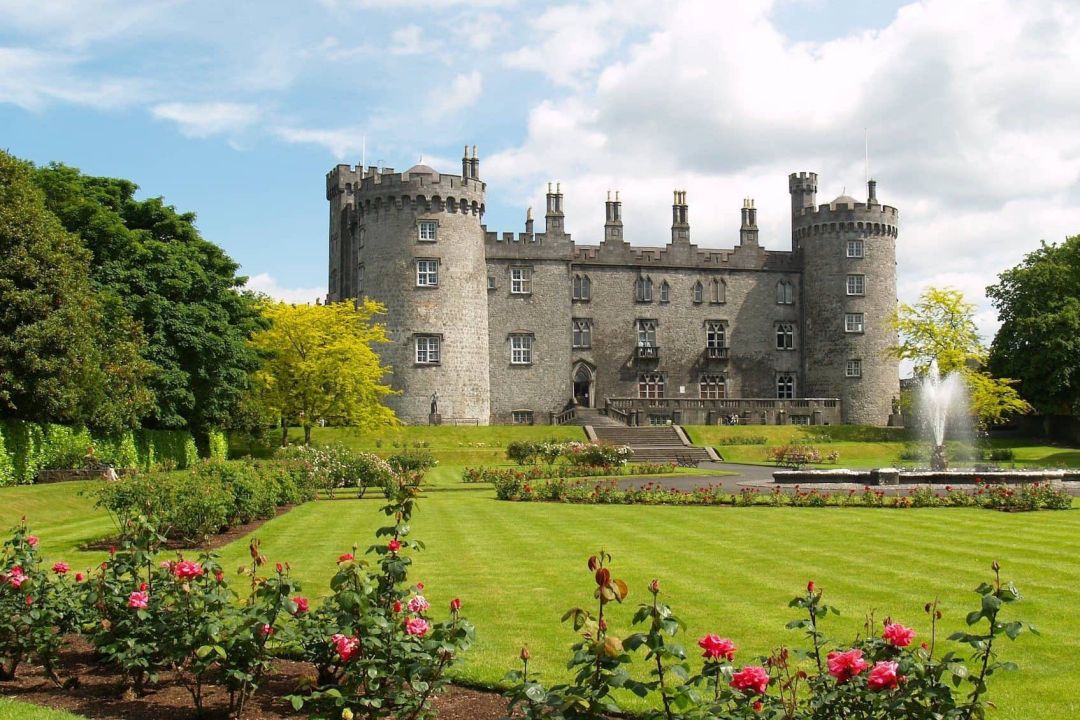Kilkenny Castle Demesne
Discover the Castle at Your Doorstep
As a guest of Butler House, you are staying within the original grounds of Kilkenny Castle, once the seat of the powerful Butler family and today one of Ireland’s most iconic landmarks. Just beyond our garden gate, you’ll find yourself stepping directly into the Castle Demesne, a vast public park filled with history, woodland paths, formal gardens, and sweeping views across the River Nore.
Whether you're strolling beneath ancient trees, exploring the Castle itself, or wandering through the craft studios in the Castle Yard, this is your opportunity to experience a living piece of Kilkenny's noble past, right on your doorstep.
Centuries of Change Beneath the Castle Walls
Over the centuries, Kilkenny Castle has undergone great change, from medieval fortress to noble residence, through decline, restoration, and finally, preservation. While much of the interior you see today reflects a late 19th- and early 20th-century rebuild, large parts of the original medieval structure, including three of the four towers and two curtain walls — still survive.
Kilkenny Castle has long been the heart of the Ormonde estate, and Butler House, just down the slope, was built as the dower house for the family in the 18th century. Together, they tell the story not only of a powerful dynasty but of how Ireland’s great houses adapted, endured, and eventually opened their gates to the public.
The Loss of the South Side
The Castle’s south wall, gatehouse, moat and fourth tower are now long gone. Their disappearance can largely be explained by Cromwell’s attack on Kilkenny Castle in 1650, when over 100 cannonballs were fired at the structure.
It was a hard time for Kilkenny, the plague arrived before Cromwell, and the city’s defending army of 1,200 was halved by illness. Just 300 men were fit to fight by the time the siege began.
Following the Restoration of the monarchy, the Butlers returned to Kilkenny in 1662 after over a decade in exile. James Butler, the 12th Earl, was elevated to Duke of Ormonde and appointed Viceroy of Ireland. He began the transformation of the Castle and its grounds into a residence in the style of a French chateau. The moat was filled in, and the damaged south wall was never rebuilt, a sign that fortresses were no longer needed in the age of cannon.
Decline and Recovery
The following century saw the decline of the Butler fortunes. The Castle and estates were seized and sold off. But in 1721, Charles Butler, Earl of Arran, managed to buy back the Irish properties through an act of parliament. Still, Charles did not live at the Castle, and the building suffered neglect. Minor repairs were carried out in 1722, but by 1747, a visitor described the Castle as resembling "a weather-beaten ship in a storm after a long voyage, with all her cargo thrown overboard."
In 1766, fortunes changed again when Walter Butler, de jure 16th Earl of Ormonde, inherited the Castle and reunited the Garryricken, Kilcash and Ormonde estates. He took up residence in Kilkenny Castle — which, at that time, had only been occupied by caretakers, and began a programme of updating and repair.
This work was helped by the substantial dowry of his daughter-in-law, Lady Anne Wandesforde, whose family had significant holdings and mining interests in Castlecomer.
A Parkland Revealed
During the 1770s and 1780s, Butler House was built as the dower house, along with the fine stables across the road, now home to the Design & Crafts Council of Ireland in what we know today as the Castle Yard.
It was during this time that the south wall and gatehouse were finally swept away, not due to war, but to make way for views. Up until then, the Castle’s grounds had served practical purposes, orchards, meadows, and kitchen gardens. But now, fashion dictated that a gentleman’s home be surrounded by walled parkland, with landscaping and specimen planting.
In 2019, archaeological excavations in the courtyard revealed the remains of the original gatehouse, twin towers with walls over three metres thick, parts of the curtain wall, and an entrance passageway, along with over 1,000 artefacts.
Kilkenny Castle Park and Gardens
When the Castle was handed over to the people of Kilkenny in the 1960s, only 15 acres remained of the estate’s original lands. Since then, that has expanded to 21 hectares, now forming a public park and a vital part of the city’s daily life.
The Office of Public Works has restored paths, planted for year-round colour, and created entrances to the park, including one with 19th-century gates from St. Stephen’s Green in Dublin. To the west of the Castle, a formal garden with axial paths and a central fountain — likely the base of a 17th-century water feature — has been brought back to life.
Two lead statues, of Hermes and Diana the Huntress, still stand on their pedestals, and terraced features throughout the garden have been restored to echo the grandeur of the Castle’s ducal era.
Explore the Estate
Whether you’re walking from Butler House through the garden gate to the Castle Yard, or crossing into the parklands that stretch along the River Nore, you are walking across a landscape that has witnessed siege, ceremony, and renewal. The Kilkenny Castle Demesne is more than a backdrop, it’s a living part of the city’s past and present.


